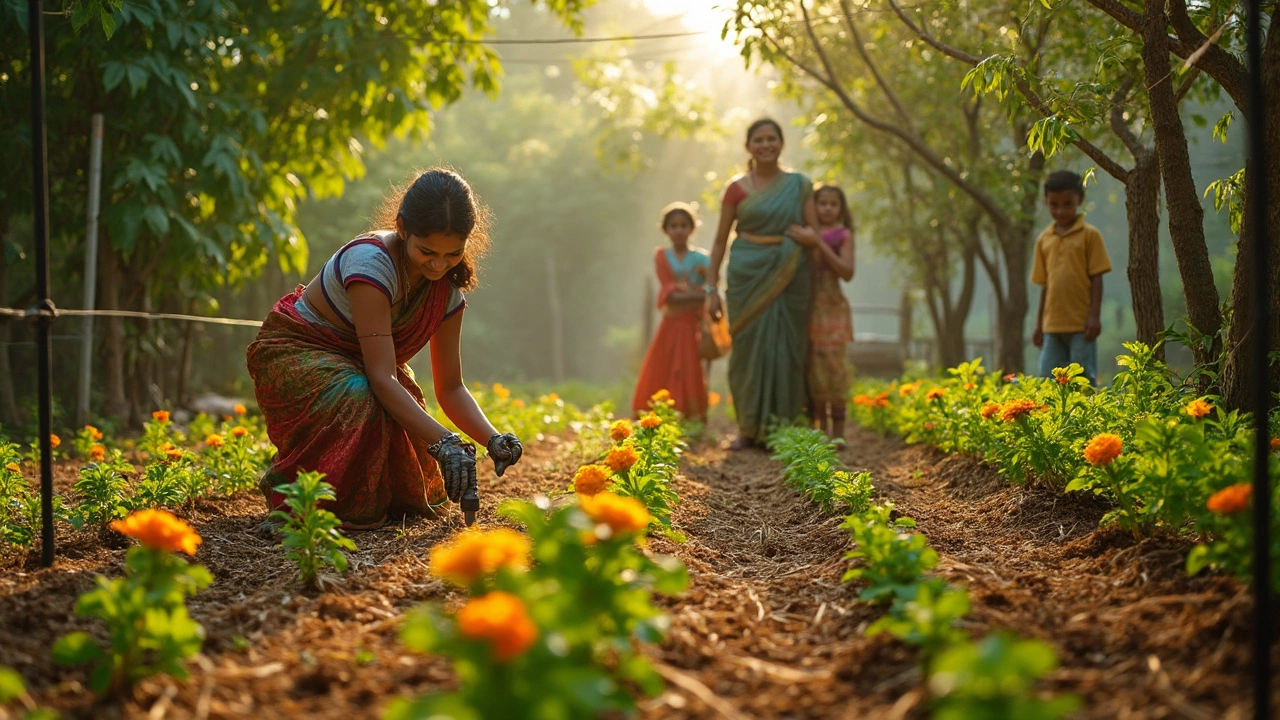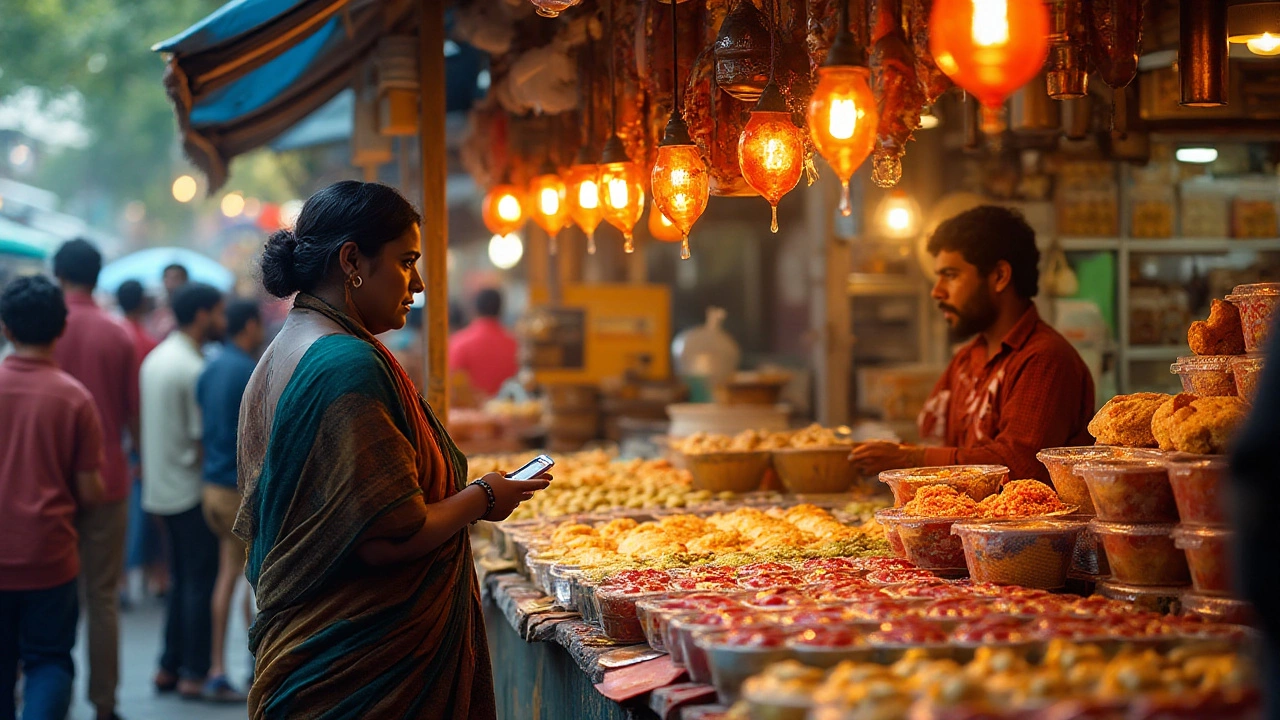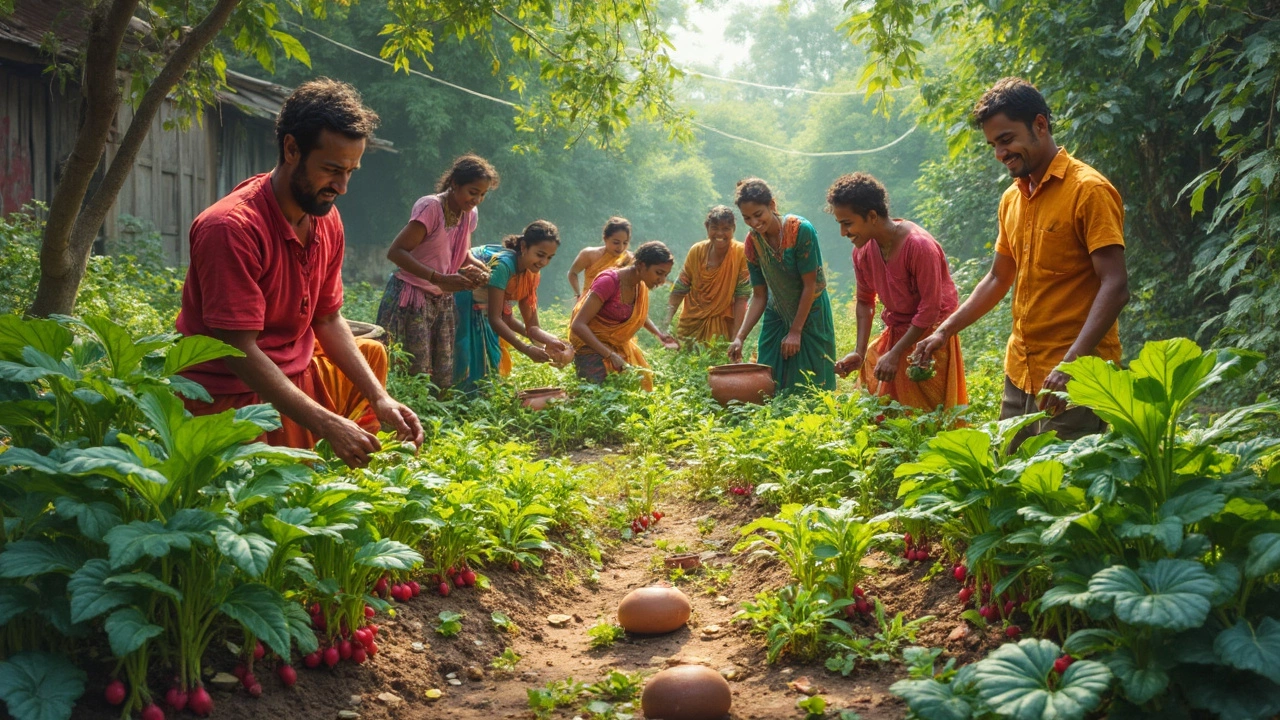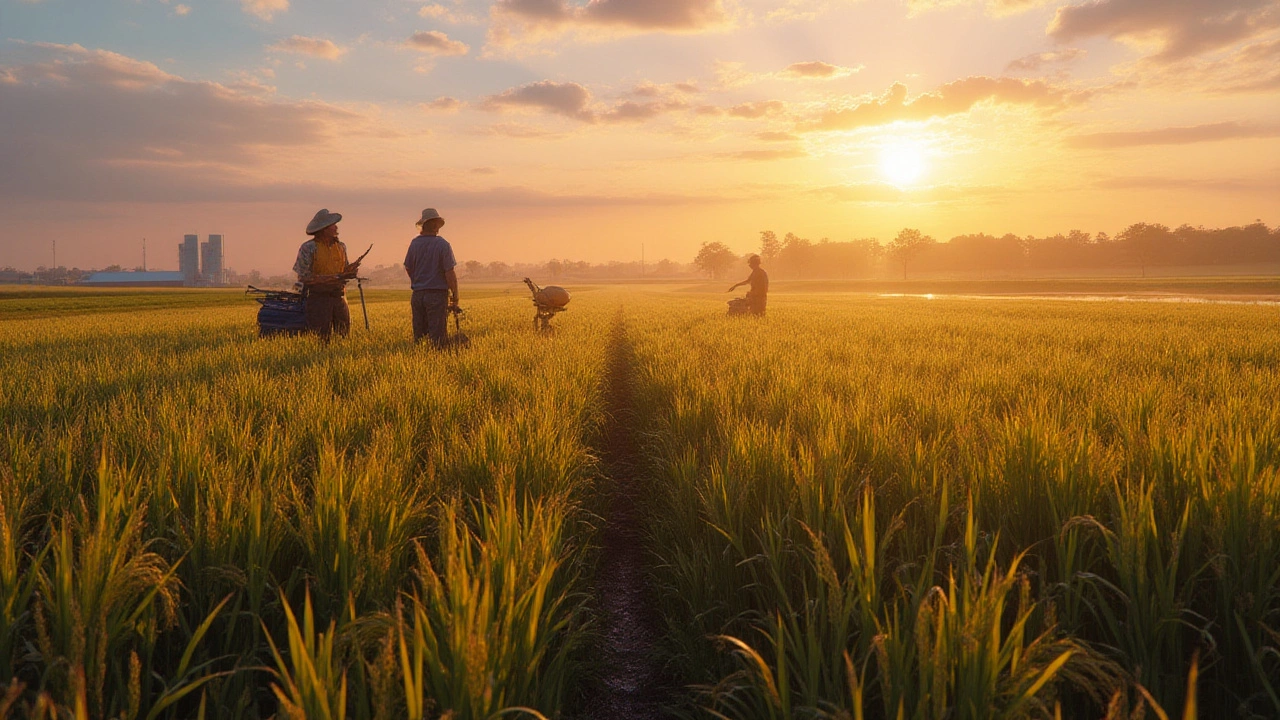Plastic Pollution in the Ocean: What’s the Biggest Offender?
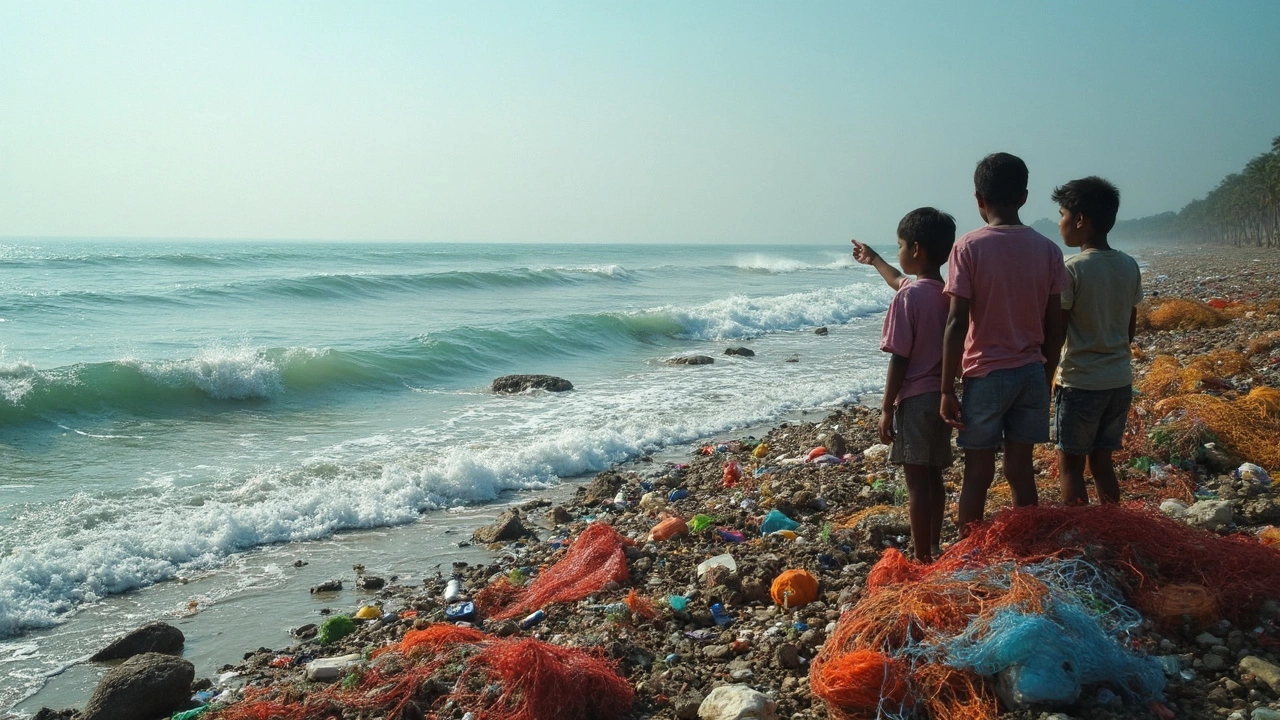
Ever wondered which plastic fills up our oceans the most? Grab a look at any beach cleanup haul, and there’s one thing you’ll see everywhere: single-use plastics. We’re talking bottles, bags, food wrappers, straws—the stuff you use for minutes but that sticks around for centuries. It’s not just an eyesore; it’s wrecking habitats and sneaking its way into the seafood on your dinner plate.
This isn’t just about careless beach-goers, either. Most of this junk starts way inland, traveling through rivers and storm drains, right into the ocean. And believe it or not, nearly half the plastic that pollutes the ocean comes from packaging—something almost every company produces or uses at some point.
- Cracking the Top Polluters
- Why Single-Use Plastics Dominate
- The Surprising Journey of Plastic Waste
- Plastic Manufacturing: Responsibility & Solutions
- Simple Actions That Actually Work
Cracking the Top Polluters
It’s not even a close contest: the worst plastic pollution in the ocean comes from basic, everyday stuff. Studies from organizations like Ocean Conservancy and Break Free From Plastic keep saying the same thing every year. The spotlight lands on food wrappers, plastic bottles, bottle caps, grocery bags, straws, and stirrers. These products are so common you probably use several before lunchtime—no surprise they’re piling up in the water.
Tossed drinks and snack wrappers might seem small on their own, but multiply them by billions of people and you end up with a plastic soup. Here are the plastic items most often pulled out during international coastal cleanups, listed by how often they turn up:
- Food wrappers (chips bags, candy, etc.)
- Plastic beverage bottles
- Plastic bottle caps
- Grocery bags
- Straws and stirrers
- Takeout containers (foam and plastic)
To get a clear picture, check out this table from the 2023 International Coastal Cleanup report, showing the top plastic items found worldwide:
| Item | Number Found |
|---|---|
| Food Wrappers | 4,325,500 |
| Beverage Bottles (Plastic) | 2,753,500 |
| Cigarette Butts (cellulose acetate plastic) | 2,326,400 |
| Bottle Caps (Plastic) | 1,990,000 |
| Grocery Bags (Plastic) | 1,150,000 |
The jaw-dropper? Most of these plastics float and easily break down into tiny particles called microplastics, which are now showing up in everything from fish guts to bottled water. If you’re looking for one culprit to point at, it’s single-use plastics—hands down the champions of plastic pollution in our oceans.
Why Single-Use Plastics Dominate
Single-use plastics are everywhere because they're cheap, light, and tough but easily tossed after one go. Think water bottles on road trips, snack wrappers, takeout containers—stuff made for quick convenience. That convenience turns into a headache fast, because around 50% of the plastic waste found in the oceans is single-use. The biggest chunk comes from just a handful of items: bottles, bottle caps, food wrappers, grocery bags, straws, and utensils. These are the top troublemakers, clogging up everything from riverbanks to remote beaches.
Why don't these plastics get recycled more? Simple—they're not worth enough. Most recycling plants can't handle thin plastics like wrappers or lightweight bags. This trash slips through the cracks and easily blows away, ending up in waterways every time the wind picks up or a storm hits. Only about 9% of all plastic ever made actually gets recycled. That's a sad stat considering how much ends up in the ocean.
Here’s a quick look at the most common single-use plastics you’ll spot out there, based on ocean cleanup data from 2023:
| Item | Percent of Ocean Plastic Trash |
|---|---|
| Plastic bottles | 14% |
| Food wrappers | 12% |
| Plastic bags | 8% |
| Bottle caps | 7% |
| Straws and stirrers | 5% |
No surprise, plastic pollution from these everyday throwaway items is harder to control than big pieces like fishing nets. There’s just too much of it, used by everyone, everywhere.
If you’re looking to help, companies and regular folks can cut single-use plastics by:
- Swapping disposables for reusables—especially bottles and bags;
- Choosing products with minimal or no plastic packaging;
- Supporting brands that use recycled material or offer plastic take-back programs;
- Encouraging local stores or offices to ditch simple, wasteful items like stirrers and straws.
Getting a grip on single-use stuff won't solve the whole problem, but it’s the best first move, especially for companies with big packaging footprints.

The Surprising Journey of Plastic Waste
You might toss a plastic bottle in the trash and not give it a second thought. But that bottle is just getting started. Most plastic pollution doesn’t come from boats dumping trash at sea—it starts right on land. According to National Geographic, about 80% of plastic pollution in the ocean actually comes from land-based sources. Much of it travels through rivers, which act like conveyor belts carrying junk from towns and cities straight to the coast.
Asia’s rivers, especially the Yangtze and the Ganges, are some of the biggest movers of plastic waste. They funnel millions of tons out to sea every year. But this isn’t just an overseas issue—local rivers across North America and Europe play their part too. Rainfall washes litter into drains, and then it’s off to the open water before anyone even notices it’s missing.
Here’s a quick breakdown of how plastic travels from land to ocean:
- People toss plastics (like wrappers and bottles) carelessly or can’t find recycling.
- Rain or wind push that plastic into drains or streams.
- Rivers carry the plastic waste, sometimes for hundreds of miles.
- Plastic enters the ocean, where it breaks down into tiny bits called microplastics or just floats around for years.
One eye-opener: about 11 million metric tons of plastic enter the ocean every year, according to the Pew Charitable Trusts. That’s about the weight of 70,000 blue whales, and the number is rising.
Chelsea Rochman, a scientist at the University of Toronto, says, "Once plastic gets into the ocean, it’s almost impossible to remove it all. The best way to stop ocean plastics is to keep them from reaching the water in the first place."
It’s not just bottles that travel this path. Microplastics from synthetic clothes, tire dust, even tiny beads from face washes all follow similar routes. If you want to see real change, controlling how we deal with plastic on land is the only way. Every step in the journey matters—from ditching single-use plastics to making sure what you toss actually gets recycled.
Plastic Manufacturing: Responsibility & Solutions
Plastic manufacturing companies are right in the spotlight when it comes to ocean plastic. The numbers don’t lie: according to a 2021 report by the nonprofit organization Minderoo Foundation, just 20 companies are behind over half of all single-use plastic waste worldwide. That’s a staggering impact packed into a small group of players.
Single-use plastics—like bags, bottles, sachets, and wrappers—are the worst offenders in ocean pollution. These items are pumped out in mind-blowing quantities because they’re cheap and super convenient for packaging. Most single-use plastics are used by food and beverage companies, but the responsibility swings back to the manufacturers. Why? Because they choose what goes into the world—and how easy it is to recycle or reuse their products.
The good news? Big names in plastic packaging are now facing public pressure to clean up their act and rethink their products. Moves like switching from virgin (brand new) plastic to recycled plastic, investing in biodegradable options, or even rolling out reuse systems are catching on. Coca-Cola, for example, committed to using 50% recycled material in its PET bottles by 2030. Not perfect, but it’s something.
"We have to put as much effort into collecting and recycling as we do into making and selling. The problem started on our watch, and we need to own the solution." — Andrew Morlet, CEO, Ellen MacArthur Foundation
Here’s a quick look at how different plastic manufacturers are taking action or falling behind:
| Company | Major Products | Plastic Use (tons/year) | Actions |
|---|---|---|---|
| ExxonMobil | Packaging resins | 5,900,000 | Pilot recycling projects, not industry-leading |
| Dow | Polyethylene | 5,400,000 | Investments in circular design |
| Sinopec | Various plastics | 5,300,000 | Limited public targets |
| Indorama Ventures | PET bottles | 3,900,000 | Expanded PET recycling |
If you’re running a company or making choices as a consumer, here are a few actions that actually make a dent:
- Ask your suppliers how much recycled content they use, not just what their logo looks like.
- Push for clear, honest labels about recyclability—and actually recycle whenever possible.
- Support companies using more recycled, refillable, or compostable packaging.
- Stay away from confusing "bioplastic" claims unless they clearly break down outside a lab.
Tackling plastic pollution takes real action from every link in the supply chain. But it always loops back to the ones making the stuff in the first place. If they shift, the ocean might finally get a breather.
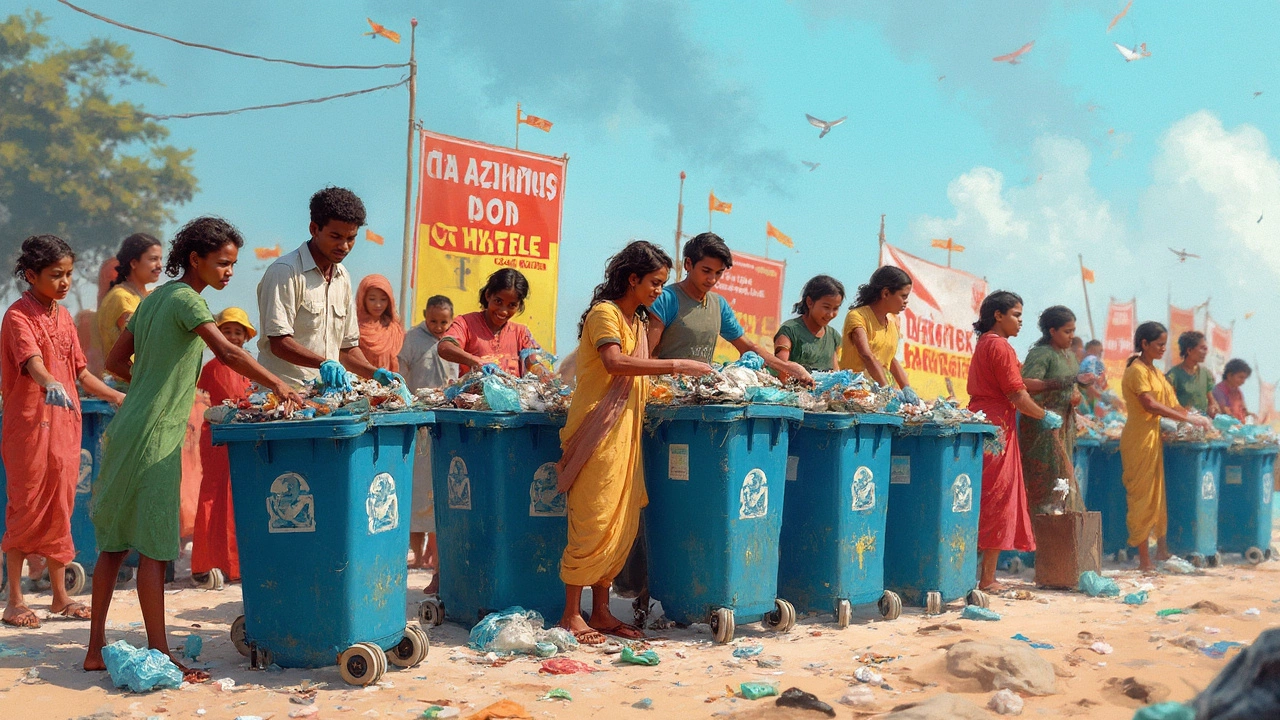
Simple Actions That Actually Work
If you’re feeling overwhelmed by the thought of oceans clogged with plastic, chill—there are concrete moves that make a real impact. Let’s get practical. First off, companies and individuals have more power than they think, and the right steps can seriously slash what ends up floating out at sea.
Looking at the data, a mind-blowing 80% of ocean plastics come from land-based sources, mostly packaging and single-use items. That means what you buy, toss, or design actually matters—big time.
- Skip single-use plastics: Ditch plastic straws, bags, cutlery, and takeout containers. Opt for reusable options instead. One study out of the University of Georgia found that reducing single-use plastics can drop household plastic waste by up to 50%.
- Choose better packaging: For manufacturers, switching to recycled or biodegradable packaging can cut overall plastic pollution by up to 30% annually according to the Ellen MacArthur Foundation’s Global Commitment Progress Report.
- Get smart with sorting: Make recycling easy—set up clear bins at home and in offices. Cities with solid recycling programs send at least 20% less plastic to landfills and oceans.
- Join local clean-up events: Data from Ocean Conservancy’s 2024 Cleanup Report shows that each volunteer collects an average of 20 pounds of trash from shorelines every event. That adds up fast when more people get involved.
- Support companies focused on solutions: Look for brands using refillable packaging or closed-loop production. Your wallet sends a strong message.
Here’s a quick look at how these actions stack up based on recent industry numbers:
| Action | Estimated Plastic Reduction |
|---|---|
| Avoiding single-use plastics daily | 15-30% less personal plastic waste/year |
| Switching to recycled packaging (company) | Up to 30% less plastic waste/company/year |
| Participating in monthly cleanups | 200+ pounds removed/person/year |
Remember, the real culprit is single-use, throwaway products. If everyone just focused on swapping those for reusables and made smarter choices, you’d see less plastic pollution hitting the ocean. Every bit counts, and these small tweaks scale fast when lots of people and businesses get on board.

